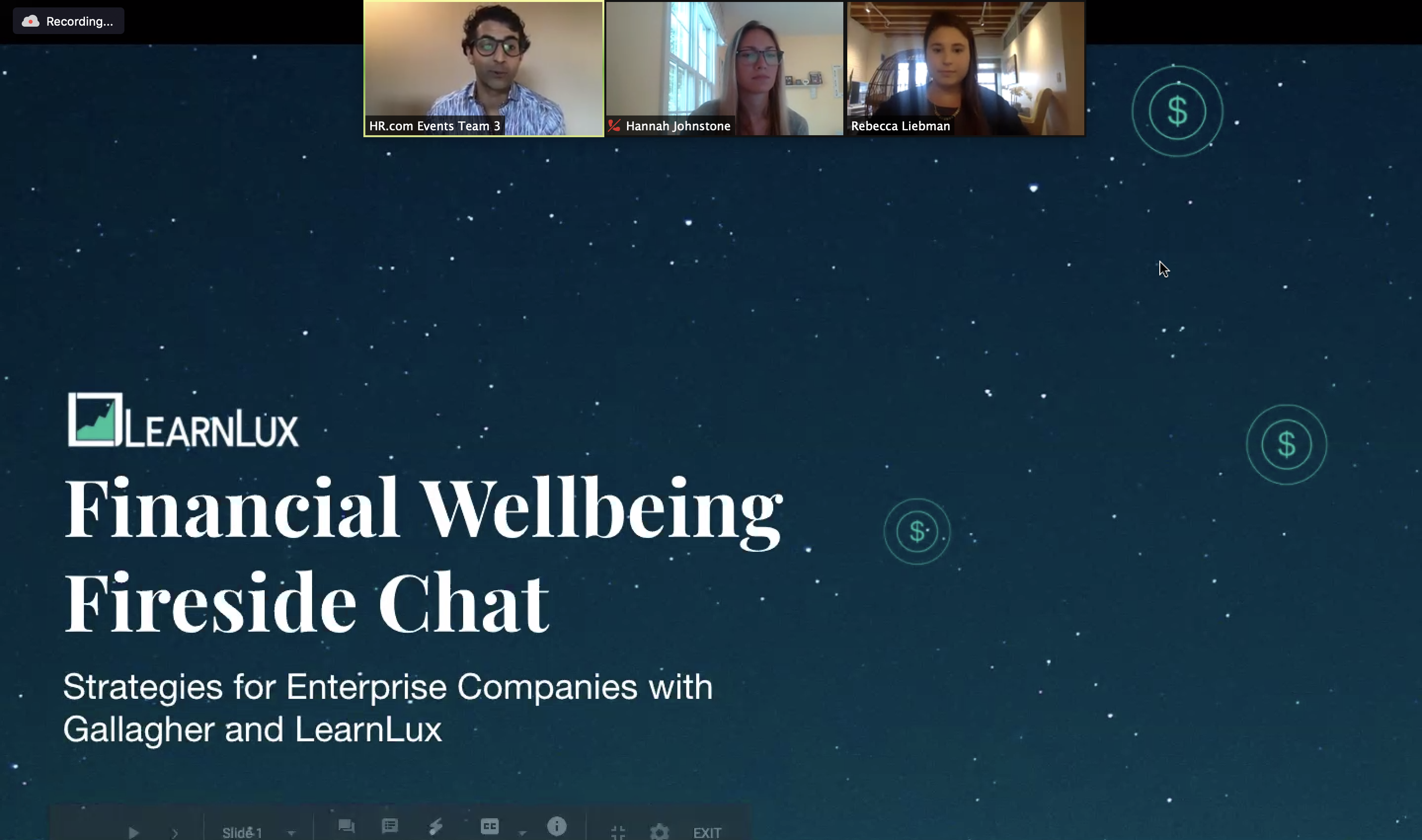Financial wellbeing experts and first-time explorers, unite! In partnership with HR.com's INSPIRE conference on June 24th, LearnLux teamed up with Gallagher for a fun fireside chat that left attendees feeling ready to tackle this complex workplace wellness topic with confidence.
Hosted by Hannah Johnstone of Gallagher and Rebecca Liebman of LearnLux, the Financial Wellbeing Fireside Chat blended industry expertise from both the consultant and vendor perspectives.
The lively discussion ended with Q&A, and some powerful attendee takeaways. Here are the top 3 key learnings that you can implement in your own workplace financial wellbeing strategy ASAP.
Financial Wellbeing Is...
What may seem like the "basics" is really anything but. Is financial wellbeing a certain dollar amount in a bank account? Is it reaching a goal, like being able to retire on time?
In its most simplistic sense, financial wellbeing is defined as control over your finances. "An employee that's financially well has the freedom to make choices to enjoy life, the capacity to absorb financial shock, and is on track to meet financial goals," says Hannah Johnstone, a financial wellbeing consultant on Gallagher’s larger Wellbeing & Engagement team. "It's a state of being where an employee can meet current and ongoing financial obligations," Rebecca Liebman added.
Old School Strategies Fail Because...
Liebman and Johnstone wasted no time getting down to the brass tacks in this digital event. They dove right into one of the biggest questions employers ask; Why aren't my legacy financial wellbeing programs working?
The key takeaways here is that many old school financial wellbeing strategies fall into one (or more) of these categories. They're one size fits all, they're in-person programs, they're given by financial institutions, and employees are embarrassed to ask personal finance questions in front of HR or their peers. On the flip side, financial wellbeing programs that are personalized, digital, independent and allow employees to get one-on-one guidance from Financial Advisors show the best results.
The Best Time to Launch a Financial Wellbeing Program Is ...
As the old adage goes, the best time to plant a tree was 10 years ago. The second best time? Today. Expanding on the point that sooner is better, Johnstone also suggested that benefits professionals ask, "when do my employees have the most pressing financial decisions to make?" Often it's in the New Year when money goals are top of mind, during tax season, or throughout financially challenging times like we're experiencing now with COVID-19.
Liebman also added that financial wellbeing programs do not need to be launched during Open Enrollment. In fact, launching well before benefits decisions need to be made can drive major ROI for your workplace. When employees feel confident in making the many pre-tax paycheck decisions associated with their benefits (HSA, FSA, retirement contributions), HR teams see more engagement and less confusion throughout the Open Enrollment season.
---
Thank you to everyone who attended the Financial Wellbeing Fireside Chat live! For those that missed it, click below to watch:
Are you ready take these learnings and apply them to your financial wellbeing strategy? Our team is here to help! Request a demo using the form below.

